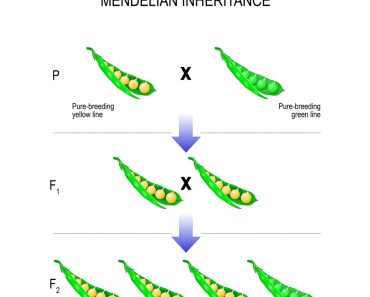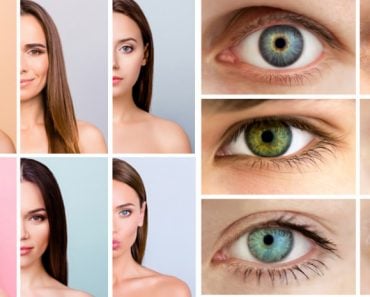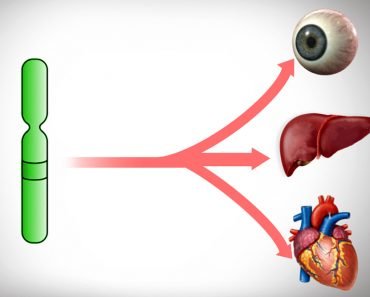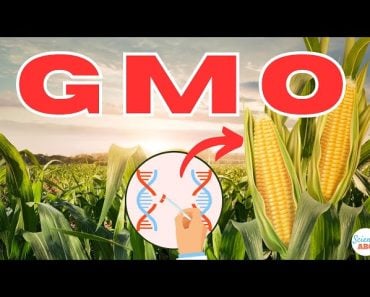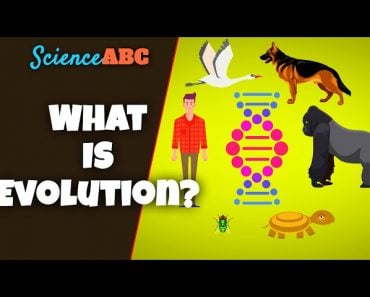Table of Contents (click to expand)
In the crossing of parents, which is true for a particular trait, only one trait will be expressed in the phenotype. In hybrid parents, however, the dominant trait is expressed in the offspring.
Every living organism produces offspring of their own kind. These offspring resemble their parents, but are not exact copies. There are differences in how the individual looks and behaves, in comparison to their parents. For example, a boy who is fair-skinned might have had a dark father, or a girl with brown hair might have a mother with blond hair. Now, you might wonder how something like that is possible.
To understand how traits pass from parents to their offspring, we need to go back in time to the 19th century and a man named Gregor Mendel.
Recommended Video for you:
What Did Mendel Do?
Mendel was an Austrian monk and biologist who loved to experiment with plants. Upon performing one such experiment with pea plants, he was able to discover the rules that govern heredity (i.e., the transmission of characters from parents to offspring).
Initially, Mendel combined a purebred green-seeded plant and a purebred yellow-seeded plant, but got only yellow seeds in the offspring. Thus, he called yellow-seeded plants dominant, since all the subsequent seeds produced were yellow. Later, he combined the yellow-seeded hybrid plants. This time around, he got both yellow and green seeds, which meant that the green trait had been hidden by the dominant yellow trait.
Mendel did not do all of this in the course of a few months. It took him 8 years to propose what we now call “Mendel’s Laws of Inheritance“. These three laws define how a certain trait, like the color of peas or blood groups, are transferred from parent to offspring.
These are the Law of Dominance, the Law of Segregation, and the Law of Independent Assortment. In this article, we will focus on the Law of Dominance in detail.
What Controls Heredity?
Before delving into Mendel’s Law, it is important to know a few basics of genetics. As we all know, living organisms are made up of trillions of cells. Each of these cells contains an important structure called the nucleus, and within each nucleus is a pair of thread-like structures called chromosomes.
Humans have a total of 46 chromosomes in each of their cells, 23 of which are given by the father, while the other 23 are given by the mother. Cells that have two sets of DNA, one from each parent, are called diploid cells (and by extension, diploid organisms).
In diploid organisms, the mother passes one allele from her ovum and the father passes one allele from his sperm cells. These two cells are fused during fertilization. It is also important to note that the gametes (ovum and sperm cell) are haploid, since they have only one copy of the chromosome.
DNA: The Blueprint Of Life
Chromosomes are composed of DNA, which is commonly called the “blueprint of life”, probably because DNA is very similar to an instruction manual for life. It contains the instructions for living organisms regarding their development, growth and function.
Variations in the DNA make a difference in how an individual appears, behaves or responds to the environment. This book of information can be further broken down into sections or chapters, called genes. A gene is a certain section of DNA that contains information for a particular trait, right from the color of the eye to the blood type of an individual. The genes that code for specific information are placed at a specific location on the chromosome.
Now, remember that chromosomes occur in pairs. One chromosome is from mom and one is from dad. Each parent will contribute information on eye color, for example. Now, there are two sets of instructions to make eye color, one from the father and one from the mother.
This is what biologists call an allele. Formally defined, an allele is a variation of a gene. Thus, if the genes from both parents have the same instruction for eye color, they have the same allele of the gene, and are therefore called homozygous. If the genes from the mother and father have slightly different information on eye color, then they are different versions of the allele and are called heterozygous.
Your genotype is the combination of alleles you have. The outward display or the physical result of that combination of alleles is called the phenotype.
What Is Mendel’s Law Of Dominance?
According to Mendel’s Law of Dominance, “When an organism is heterogeneous for a trait, it expresses only the dominant allele”. In other words, the dominant trait always masks the recessive trait.
What this means is that one allele is dominant over the other allele when they are different alleles. Consider it like this; a person with a louder voice is more likely to be heard than a second person with a quieter voice. In the same way, the dominant allele contributes exclusively to the phenotype (the outward expression of the trait) of the offspring. Dominance occurs when one of the two alleles is non-functional, which means that it does not produce a functional protein. The recessive trait will be expressed only when the offspring inherits the recessive trait from both parents. An organism will show a distinctive phenotype when it is homozygous for a non-functional allele, due to the absence of protein products.
Let’s take an apple as an example, a variety that exists in two colors, namely red and green. Also, let’s assume that RR represents the allele for a red apple and rr represents allele for a green apple.
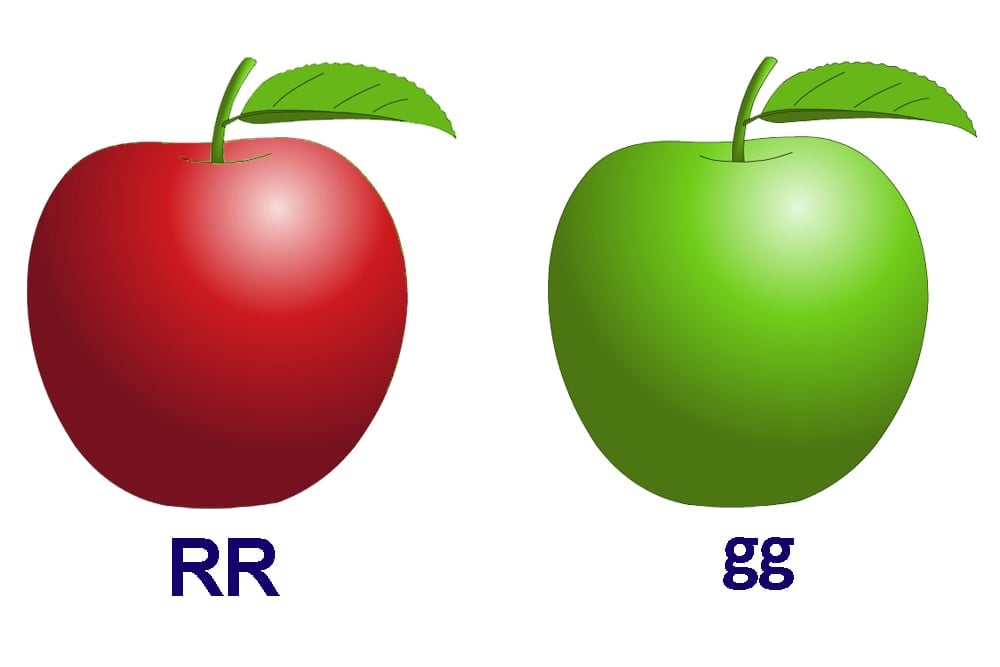
A dominant gene is one that is expressed in the offspring. When true-breeding red and green apples are crossed, all apples are red, which means that the red (RR) trait is dominant over the green (gg) trait. The F1 generation offspring express only the dominant gene. Punnett squares help in better understanding all of this.
Punnett Square
A Punnett square is a diagram used to determine the probability of an organism having a particular trait. The first row and first column denote the mating parents. Uppercase letters denote dominant genes and lowercase letters denote recessive genes. By trying different combinations of the parental gene, the trait that will be expressed in the offspring can be determined.
| r | r | |
| R | Rr | Rr |
| R | Rr | Rr |
Now, let’s cross two F1 generation apples. What happens now, in the F2 generation, is that 75% of the produced apples will be red and 25% will be green.
| R | g | |
| R | RR | Rr |
| G | Rr | rr |
In heterozygotes, the gene that is dominant for the trait will be expressed. Likewise, if neither of the parents possess the dominant trait, the resulting offspring will demonstrate the recessive trait.
For more detailed understanding, let’s apply this law to human eye color!
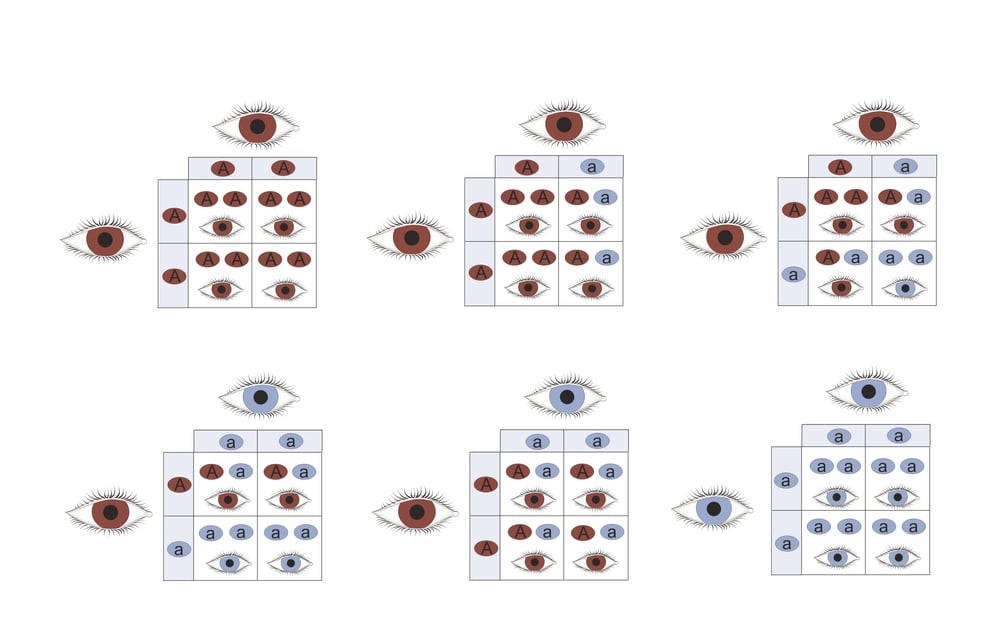
In the above image,
A-dominant brown eye allele
a-recessive blue eye allele
Aa-brown eyes
AA-brown eyes
aa-blue eyes
It can be inferred from the diagram that different combinations of eye color genes lead to the formation of individuals with a distinct eye color.
What Are The Limitations Of The Law Of Dominance?
Although Mendel’s Law explains the inheritance pattern in sexually reproducing organisms, it does not hold true in all cases. There are a few complex inheritance patterns that cannot be understood with Mendel’s Law alone. One such condition is the presence of multiple alleles, which means that there are more than two alleles that code for a trait.
Let’s consider the human blood type. Red blood cells generally exist in three types. Type A (IA), type B(IB) or type O(i). These alleles combine in different forms like (IAIA ) or (IAi) for type A and (IBIB) or (IBi) for type B. Type O occurs only when the individual inherits two recessive alleles.
These are examples of complete inheritance, whereas type AB is an example of co-dominance. The alleles A and B are equally dominant, so when they combine to form a genotype, both the alleles will be expressed equally, resulting in the AB blood type. This blending type of inheritance may also occur in some organisms.
In recent years, studies have revealed that environmental factors also affect the genotype of an individual. For example, the length of period for egg development in Drosophila has been observed to show variations with respect to environmental temperature.
The egg development time decreased with an increase in temperature. Another complex part that Mendel’s laws do not account for is behavioral genetics. Multiple genes control the behavioral pattern of an individual. These kinds of behavioral traits are considered to be multifactorial traits, since they’re controlled by factors other than the genotype.
While Mendel’s work isn’t directly relevant to many of the genetic problems we see today, they were the foundation that led to a better understanding of genetics and inspired countless other scientists to look deeper into this critical area of life!

